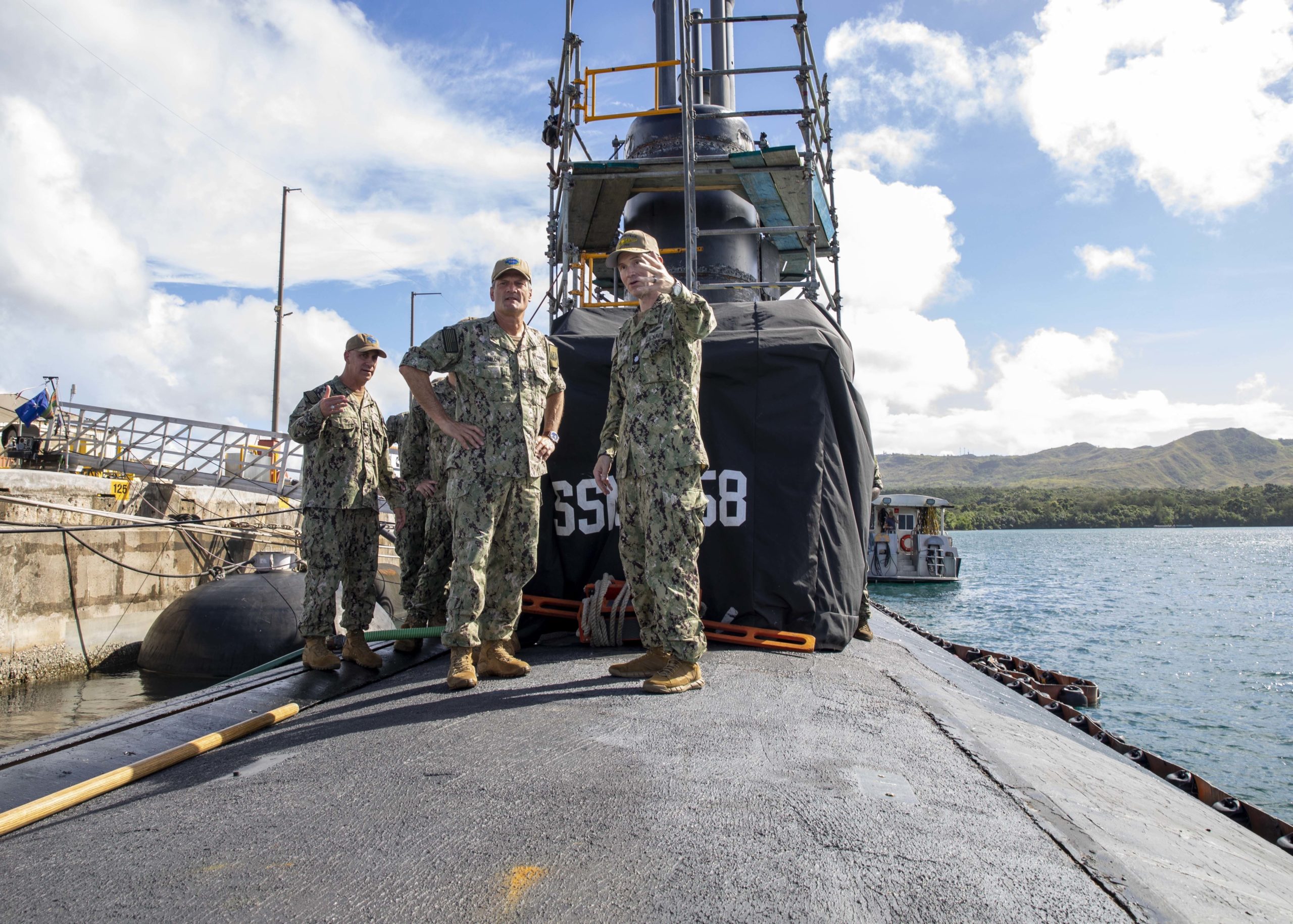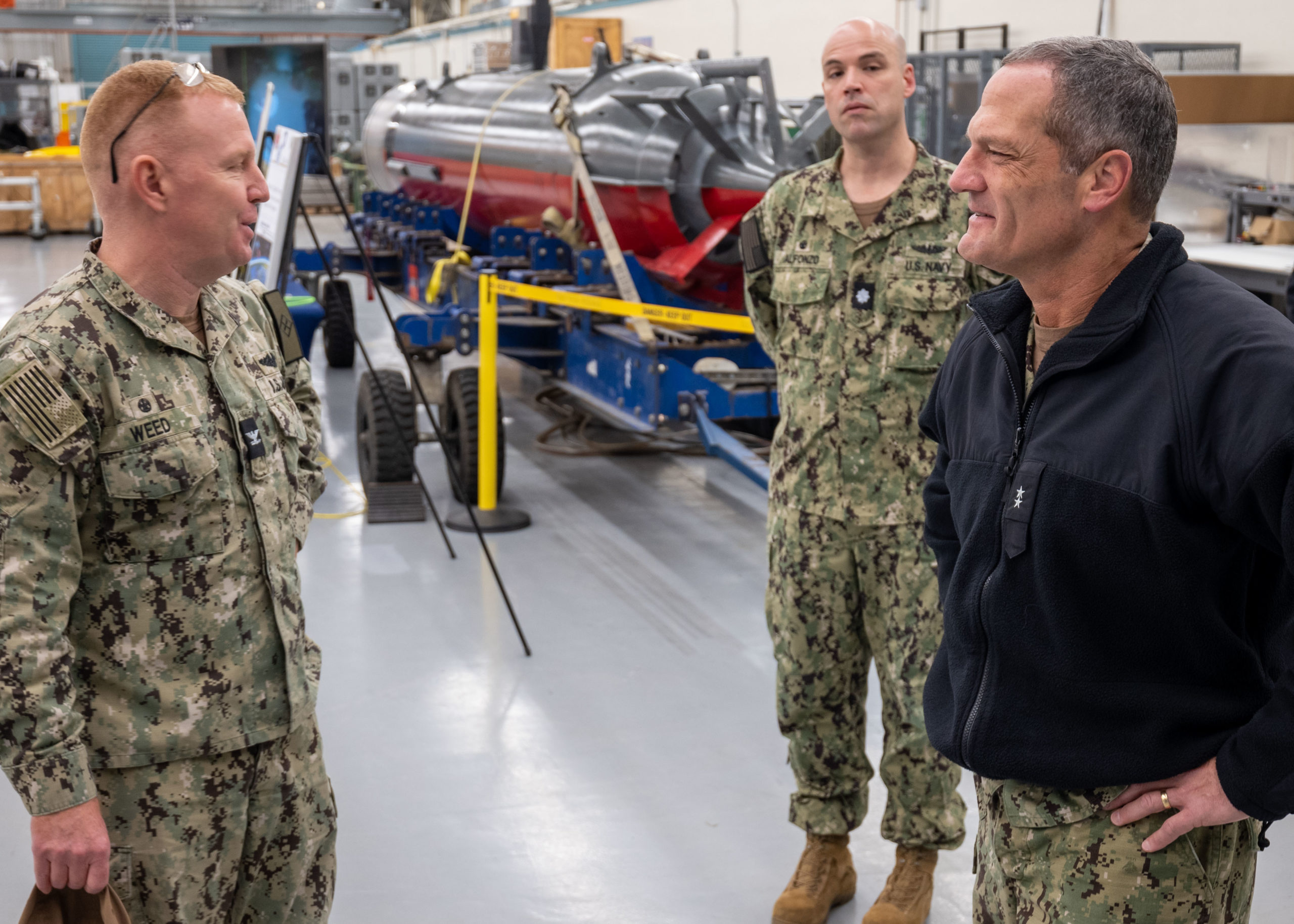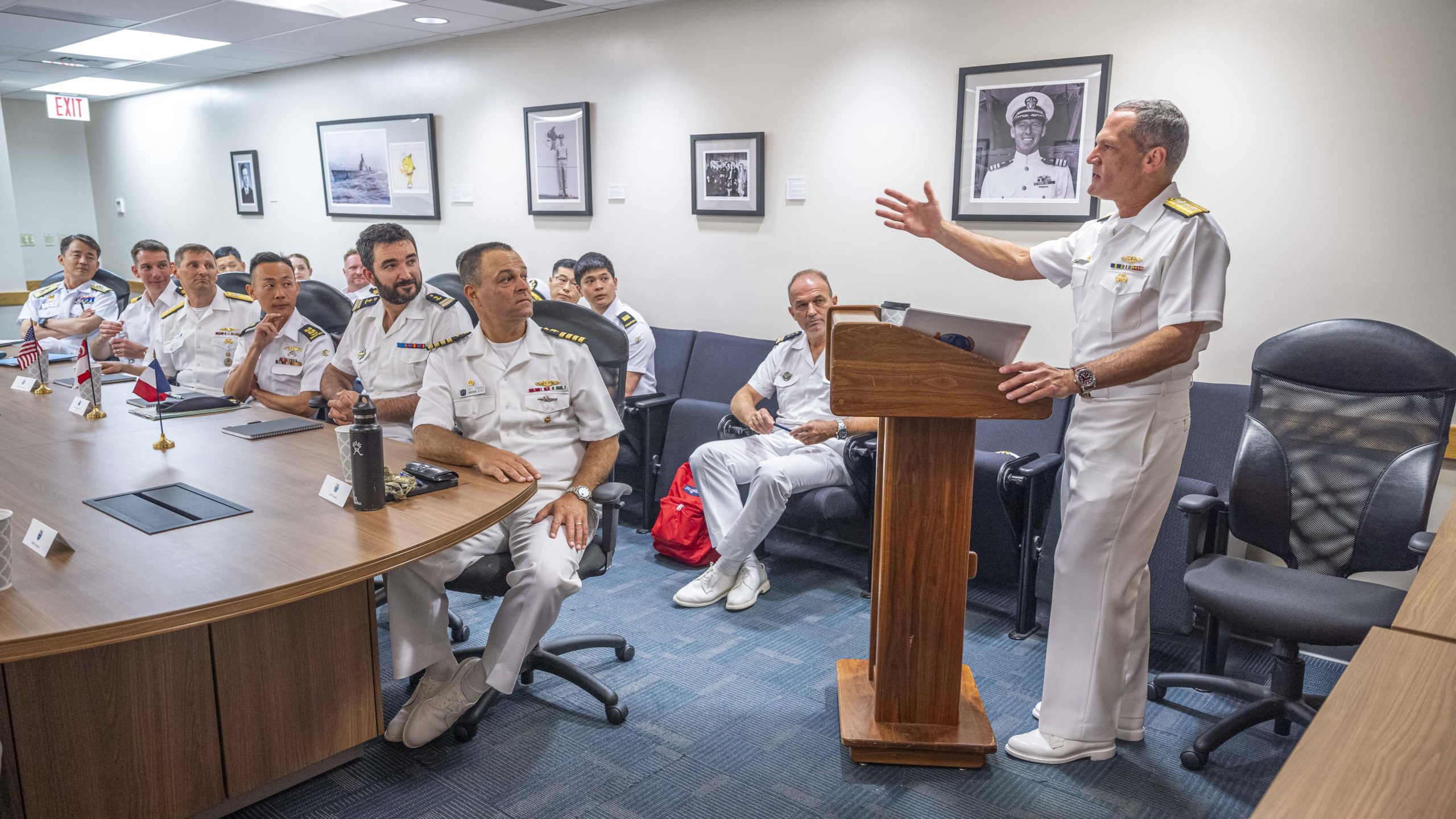By Robbin Laird
During my visit to Honolulu during the last week of April 2023, I had a chance to meet with Rear Admiral Jeffrey Jablon, the Submarine Force, U.S. Pacific Fleet (SUBPAC) commander. We disscused the evolving role of the submarine fleet in the challenging environment of the Pacific.
In Europe, Russia faces three Western nuclear powers. In the Pacific, the U.S. and its allies and partners face three nuclear powers: China, Russia and North Korea. Any consideration of the nature of warfighting in the Pacific has to be considered in the context of the threat of nuclear weapons use, with three adversaries who do not have the same doctrine.
SSBNs are a key part of any nuclear deterrent equation in addition to the key role which SSNs play in the broader conventional deterrence equation. We did not focus specifically on the nuclear dimension, but it can never be forgotten in the Pacific context.
As I wrote comncering the impact of the war in Ukraine to date on nuclear deterrence: “But the core question is simply put: does the possession of nuclear weapons effectively create sanctuaries in your territory in case of conflict?
“Does this work with regard to extended deterrence as well by the United States with its allies? Would this apply to the defense of Australia as it expands its basing support for the United States? Does this work as well in the Pacific with China, Russia, North Korea and the mainland of the United States effectively sanctuaries? How does the question affect warfighting strategies, muti-domain or otherwise?”
Let me start by clarifying what the role of Rear Admiral Jablon and his command is within the overall submarine contribution to the U.S. Pacific Fleet. As the submarine type commander in the Pacific, he is charged with the task of manning, training and equipping the submarines in the theater. He is also the operational commander of Task Force 34, where he reports to the U.S. 3rd Fleet Commander, Vice Admiral Boyle (whom I meet with in January in San Diego) who has responsibility for naval operations east of the international dateline. The U.S. 7th Fleet Commander owns all operations west of the international dateline.
In his role with regard to training and equipping the submarine force, Jablon is responsible for ensuring that the subs are combat ready: able to conduct any mission, and ready to deploy. Warfighting is his top priority.
The SSNs operate on a Fleet Response Training Plan cycle. The subs go on a 6-month deployment. They then come back for 12 months of training, modernization, and maintenance and then go back on deployment.
The stealth quality of the nuclear submarine and its speed are key elements of its ability to be first to the fight. But as described by Rear Admiral Jablon, the submarine being able to be first to the fight is in the context of moving the joint force into a better position to prosecute the fight. As he put it: “I would no longer characterize ourselves as a silent service. Deterrence is a major mission for the submarine force. You can’t have a credible deterrent without communicating your capabilities; if the adversary doesn’t know anything about that specific deterrent, it’s not a deterrent.”
Part of this deterrent emphasis is upon a more public display of the submarines we have and the capability they can demonstrate. Frankly, what the SSGNs have demonstrated over the years is the versatility of the submarine to contribute range, speed and stealth and then deliver firepower including the Tomahawk Land Attack Missile (TLAM) and special operations forces.
Now submarines are becoming part of deterrent signaling and operating in new ways to enhance their overall deterrent impact.
For example, earlier in April 2023, the ballistic missile submarine USS Maine (SSBN 741) publicly visited Guam for a logistics visit. During that visit, submarine commanders from Japan and the Republic of Korea embarked the Maine. The Navy stated that “The embark was an example of how U.S. forces are advancing the U.S-Japan-ROK trilateral relationship that is forward-leaning, reflective of shared values, and resolute against threats that challenge regional stability.”
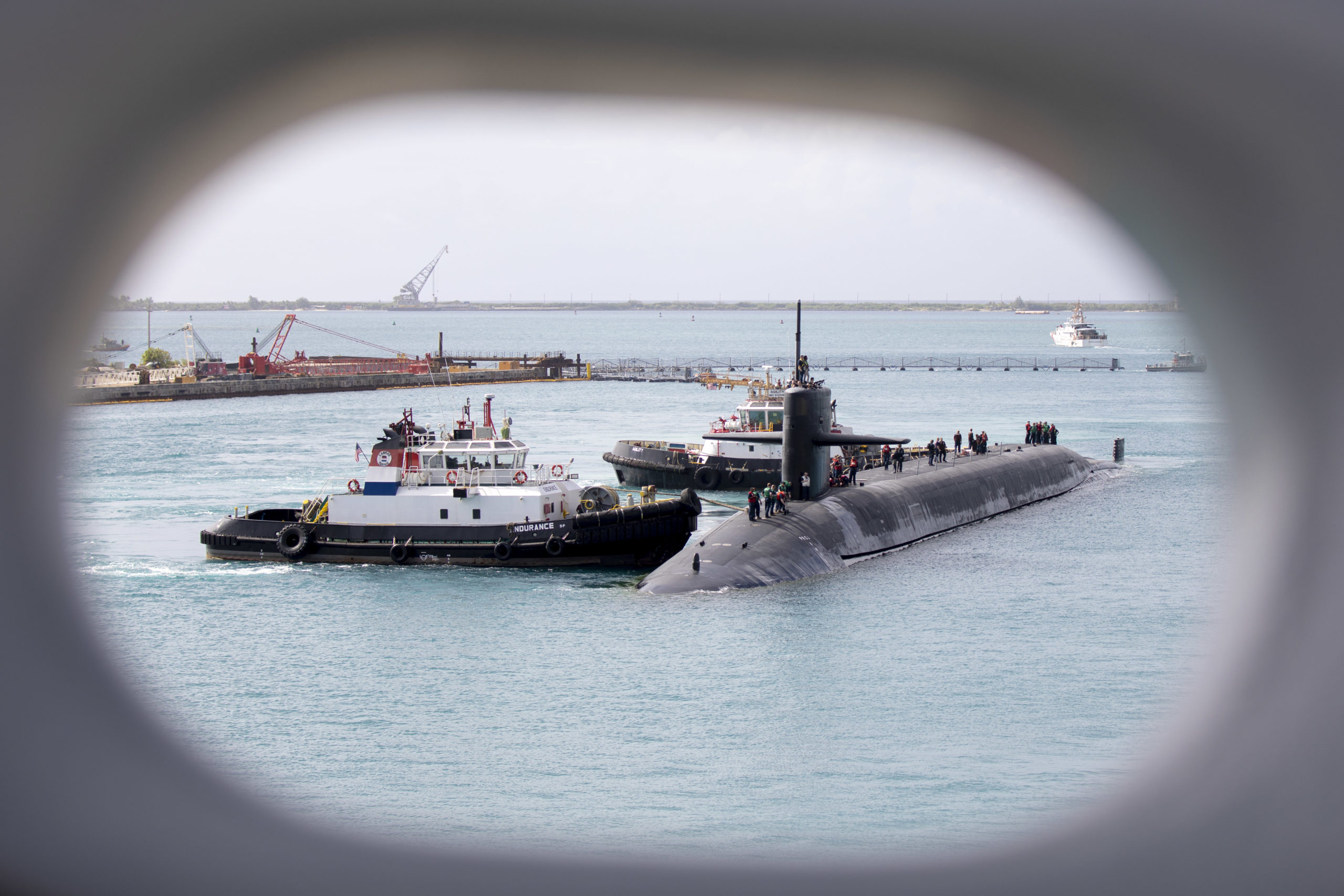
And recently, the White House announced that an SSBN would make a port visit to South Korea. As a Reuters story published on 27 April 2023 noted: “For the first time since the 1980s a U.S. Navy nuclear-armed ballistic missile submarine (SSBN) will visit South Korea to help demonstrate Washington’s resolve to protect the country from a North Korean attack. The visit was announced in a joint declaration during a summit between South Korean President Yoon Suk Yeol and U.S. President Joe Biden in Washington on Wednesday….
“The United States has pledged to deploy more so-called “strategic assets” such as aircraft carriers, submarines, and long-range bombers to South Korea to deter North Korea, which has developed increasingly powerful missiles that can hit targets from South Korea to the mainland United States.”
Also, the Navy is stepping up its cooperation with allied submarine forces, as illustrated in Rear Admiral Jablon recently hosting the Submarine Warfare Commanders Conference: a core meeting with other submarine commanders from Japan, the Republic of Korea, Singapore, Australia, Canada, France, and the United Kingdom. As he underscored: “During the conference, the submarine force commanders discussed the coalition approach to interoperability, which is a key part of deterrence.”
In an 18 April 2023 story published by the U.S. Navy, this conference was highlighted as follows: “Commander, Submarine Force U.S. Pacific Fleet hosted the 2023 Submarine Warfare Commanders Conference (SWCC) at Joint Base Pearl Harbor-Hickam, April 12-14, 2023.
“The purpose of SWCC, which was first held in 2018, is to strengthen a free and open Indo-Pacific region through expanded cooperation between submarine force commanders of allies and partners.
“When we hold the SWCC each year and come together with our allied and partner submarine force commanders, we demonstrate the strength of our relationships,” said Rear Adm. Jeff Jablon, commander, Submarine Force U.S. Pacific Fleet. “Now more than ever, these strong relationships give us an asymmetric advantage as we work together in this incredibly dynamic region to maintain the international rules-based order.”
“Submarine commanders from the Royal Australian Navy, Royal Canadian Navy, French Navy, Japan Maritime Self-Defense Force, Republic of Korea Navy, Royal Navy, and Republic of Singapore Navy met with U.S. Pacific Fleet commanders on the historic submarine base at Joint Base Pearl Harbor Hickam, Hawaii.
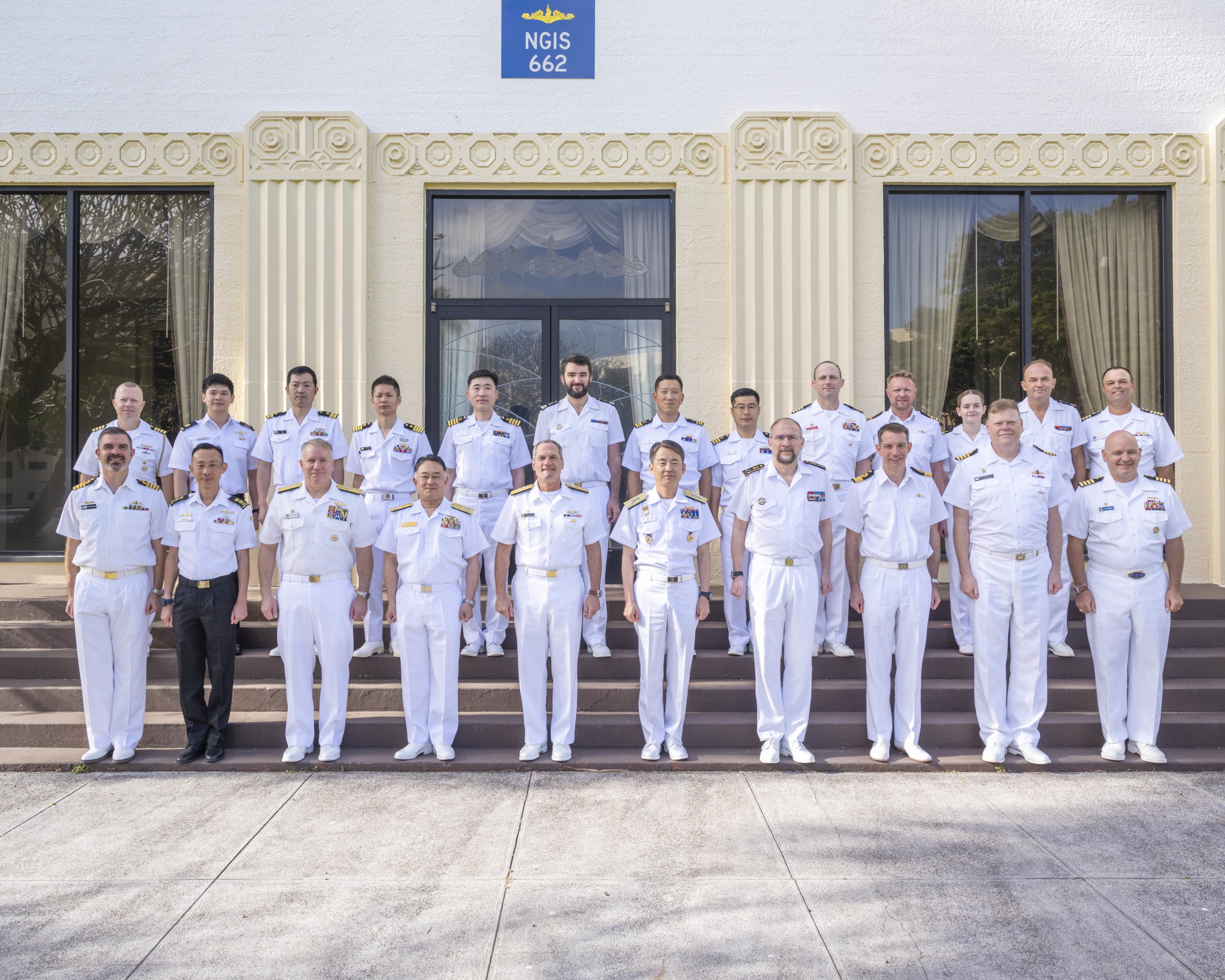
“The U.S. Submarine Force is an indispensable combat capability in our Joint and Combined Force to ensure freedom of the seas in support of defending the security, freedom and wellbeing of our nation and allies and partners through deterrence and upholding the international rules based order,” said Adm. Samuel J. Paparo, commander, U.S. Pacific Fleet. “Our undersea warfare is made up of advanced technology, quality of training and exceptional personnel, but the solidarity of our alliances and partnerships is our asymmetric advantage.”
“The multi-day event included briefings from each submarine force commander and discussions which focused on the theme of this year’s conference, “Improve Multinational Maritime Domain Awareness and Theater ASW Capability in the Indo-Pacific Theater”. SWCC provided an opportunity for commanders to exchange perspectives through an open dialogue and encouraged allied and partner countries to continue to find ways to work together through collaboration and innovation.
“The conversations we had during this conference will collectively strengthen our team, and will maintain our overmatch in the undersea domain,” said Jablon. “I look forward to more opportunities for us to work together as a combined force in exercises and real-world operations.”
The role of the submarine in the joint and coalition force is being expanded. The submarine force is part of the joint fires solution. The submarine force can operate independently or work with the joint or coalition force in providing joint or coalition force combined effects.
As the joint force works enhanced kill web capabilities, combat clusters can operate together to deliver joint fires solutions. As Ed Timperlake and I have argued in our book on the evolution of the maritime kill web: “Force packages or combat clusters are deployed under mission command with enough organic C2 and ISR to monitor their situations and integrate the platforms that are part of that combat cluster and to operate effectively at a point of interest. Within that combat cluster, the C2 and ISR systems allow for reachback to non-organic combat assets which are then conjoined operational for a period of time to that combat cluster and becomes part of an expanded modular task force.
“With the right kind of security arrangement, and C2 and ISR capabilities, the presence force, now an expanded modular task force, need not be American to expand the reach and effectiveness of the operational force in the extended battlespace. Such an approach and capabilities are the essence of what a kill-web enabled force is and how such integratability can close the geographical and combat seams which 21st century authoritarian powers are focused on generating.
“This allows for the kind of escalation management and control crucial for the competition with the 21st Century authoritarian powers. It is not about getting to World War III as rapidly as possible or generating nuclear exchanges early in a widening conflict. It is about escalation control and management, and an ability to close seams which adversaries seek to open to gain significant escalation dominance as they expand the reach and range of those 21st century authoritarian powers.”[1]
Rear Admiral Jablon underscored the nature of the shift as follows: “The submarine force is now becoming part of the ‘combat clusters’ that you’re talking about instead of an independent operator. In the Cold War, we operated independently, alone, and unafraid. During the land wars, we started becoming part of the joint force as we provided land fires via the TLAM. Now, we are fully integrated with the joint force in terms of targeting and communications. But, of course, we can also conduct independent operations as the ‘silent service’ when directed.”
The broadening of the submarine’s role within joint warfighting is being expanded by the arrival and then growth in capability of autonomous systems. In my own view, rather than seeing autonomous systems in the short- or medium-term creating ghost fleets, their role will be to expand the range, capability, and lethality of capital assets. Rather than looking simply at the organic capability on a specific platform, we will consider surface ships using such capabilities as becoming mother ships and submarines will share in this development as well.
Rear Admiral Jablon specifically mentioned two types of autonomous developments of note for the submarine fleet. One is the ability to operate a UUV out of a torpedo tube, with the UUV coming back after its mission to offload data specifically onboard the submarine.
In article published by USNI News on 2 November 2022, this development was described as follows: “In the near future, the U.S. nuclear attack submarine fleet will be able to launch and recover an underwater robot from a torpedo tube, Navy officials said this week. The torpedo-sized Razorback — designed to extend the awareness of a submarine— has been in testing on the Navy’s attack boats for more than a year but requires a dry deck shelter and divers to recover the 600-pound UUV. The current procedure has blunted the utility of the system, Submarine Force commander Vice Adm. Bill Houston said on Tuesday at the Naval Submarine League’s annual symposium.
“The Medium UUV can go on any one of our submarines. That is a priority for us. We have no problem launching UUVs. That’s easy. The recovery part has been the critical aspect,” Houston said at the Naval Submarine League’s annual symposium. The Navy tested a system earlier this year to recover the Medium UUV via torpedo tube and is close to deploying the system in the “very near future,” said Rear. Adm. Doug Perry, the director of submarine warfare for the Office of Chief of Naval Operations (OPNAV N97).”
Unmanned Undersea Vehicles Squadron One is under Rear Admiral Jablon’s command and is where UUV solution sets are being worked for deployment. And in February of this year, he visited Keyport, Washington where the squadron is based.
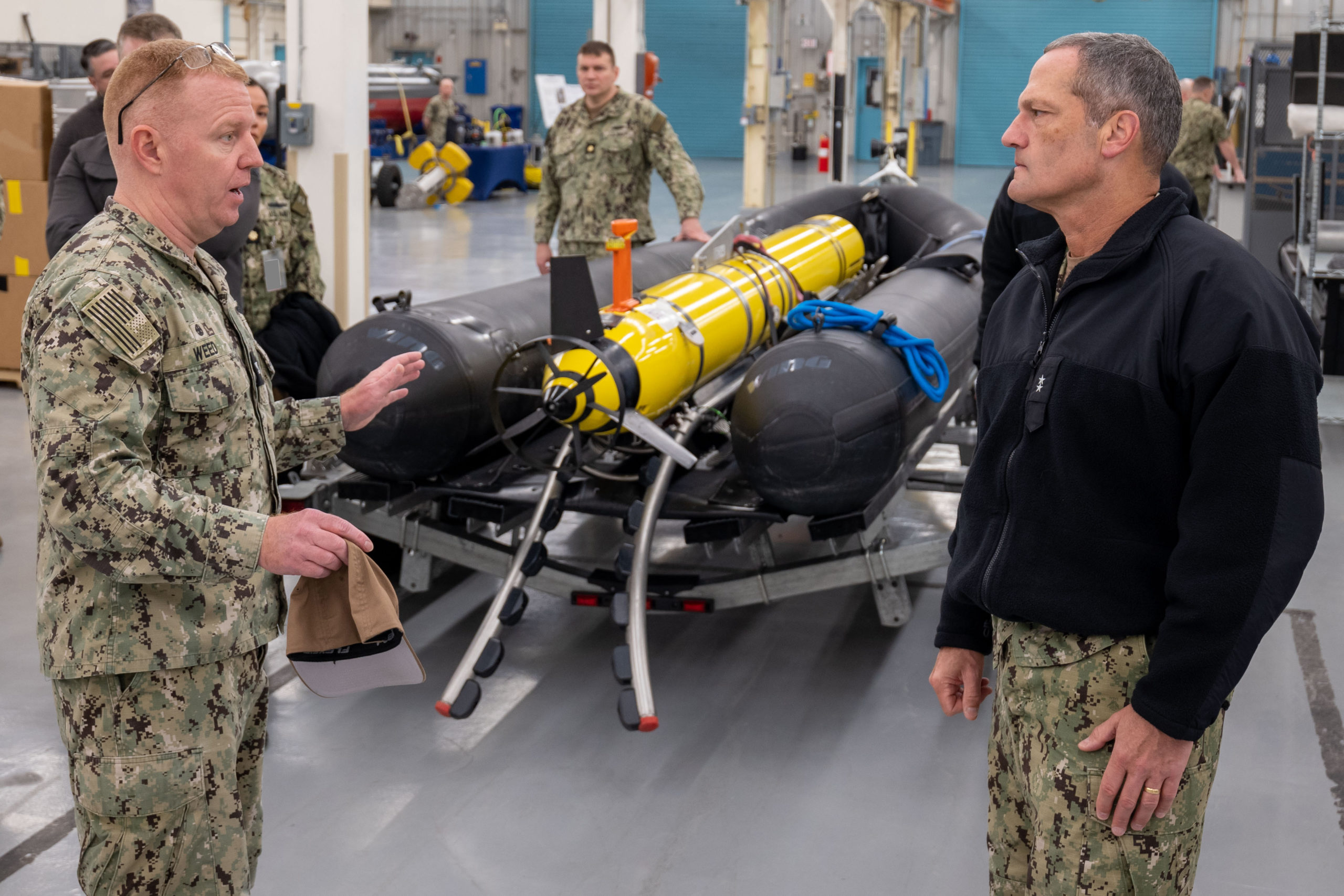
The second autonomous development is the ability to launch a UAV while submerged to enable joint fires.[2] Rear Admiral Jablon said that they had specifically worked this with the USMC as the force develops its Expeditionary Advanced Base Operations (EABO) solution set.
Finally, the joint force, including the submarine force, are working new ways to do expeditionary logistics to enable resupply of the force when operating in a contested environment.
A 23 August 2022 Navy story discussed such VERTREP.
“NAVAL BASE KITSAP – BANGOR, Wash. — Two Ohio-class ballistic missile submarines demonstrated their ability to replenish while operating at sea during a series of vertical replenishment (VERTREP) exercises off the coast of California July through August, 2022.
“During the exercise, the Ohio-class ballistic missile submarines USS Nevada (SSBN 733) and USS Henry M. Jackson (SSBN 730) operated jointly with U.S. Navy MH-60R Seahawk helicopters, U.S. Marine Corps CMV-22 Ospreys, and U.S. Air Force C-17 Globemaster IIIs.
“Recently the Pacific SSBN submarine force exercised a vertical replenishment capability for at-sea SSBNs to prove our resiliency for worldwide operations and to replenish our ships with materials, food and operational gear,” said Capt. Kelly L. Laing, director of maritime operations for Commander, Task Group 114.3. “This allows us to maintain an unpredictable forward presence and continued demonstration of the unmatched strength of our strategic forces.”
“The event showcased the submarines’ ability to remain on mission and at sea while performing essential replenishment operations.
“Our fundamental mission is to deter a strategic attack, which is an existential threat to the United States and our allies.” said Rear Adm. Mark Behning, commander of both Submarine Group 9 and Task Group 114.3. “Testing our readiness ensures we maintain a safe, secure and reliable strategic deterrent force.”
“The event was part of a U.S. Strategic Command exercise which highlights the interoperability of multiple U.S. military platforms in order to implement the strategic deterrence mission.
“Exercising these VERTREPs was a joint operation involving Marine and Air Force assets,” Laing said. “This shows our commitment to joint operations worldwide and between combatant commanders. This is important so that we don’t stovepipe ourselves under one community or brand. We are committed to operating together as a global force.”
“This event is the latest in a series of efforts by the United States submarine force to look at alternative operations that previously required a submarine to be pierside to accomplish. For example, in May, the Ohio-class ballistic missile submarine USS Alabama (SSBN 731) conducted an at-sea crew exchange, swapping out the blue and gold crews. This demonstrated the submarine’s ability to continuously operate and stay on mission for longer periods of time while sustaining quality of life for the crews and their families.
“What this shows to our allies and adversaries is that we have the ability to keep our boats at sea,” Laing said. “This shows them that we are ready.”
“Nevada and Henry M. Jackson are two of eight Ohio-class ballistic missile submarines homeported at Naval Base Kitsap-Bangor. The Ohio-class ballistic missile platform provides the United States with its most survivable leg of its strategic deterrent forces.”
While a variety of systems could be used to replenish food onboard the submarine, if a critical part is required, the speed, range and variable path of operations of the Osprey would make this the preferred partner. As the Navy is adding CMV-22bs to its fleet, this is yet another role it could play for fleet distributed operations.
For rearmament, the submarine tenders have been developing various locations from which to re-arm submarines. Obviously, the command element would work submarine operations in such a way that a cascading approach to weapons resupply would be worked in times of conflict.
But the navy has only two submarine tenders, and both are to be replaced by new versions in the mid-term. But the Navy is working various ways to get best value out of their sub tenders, but as the Navy adds UAVs to the fleet, the demand signal goes up on the Military Sealift Command and upon its sub tenders as well.
We concluded by my asking Rear Admiral Jablon what investments in the mid-term would make a significant contribution to his operational force.
“Having a robust maintenance infrastructure is crucial for us, and the Navy is allocating more resources to this through the SIOP program. When we can get submarines through maintenance periods on time or ahead of time, that translates into more time I can operate these submarines at sea, which increases our presence, and increases deterrence.”
[1] Laird, Robbin F. and Timperlake, Edward. A Maritime Kill Web Force in the Making: Deterrence and Warfighting in the 21st Century (pp. 41-42). Kindle Edition.
[2] https://www.thedrive.com/the-war-zone/39700/the-u-s-navys-submarine-launched-aerial-drone-capacity-is-set-to-greatly-expand



